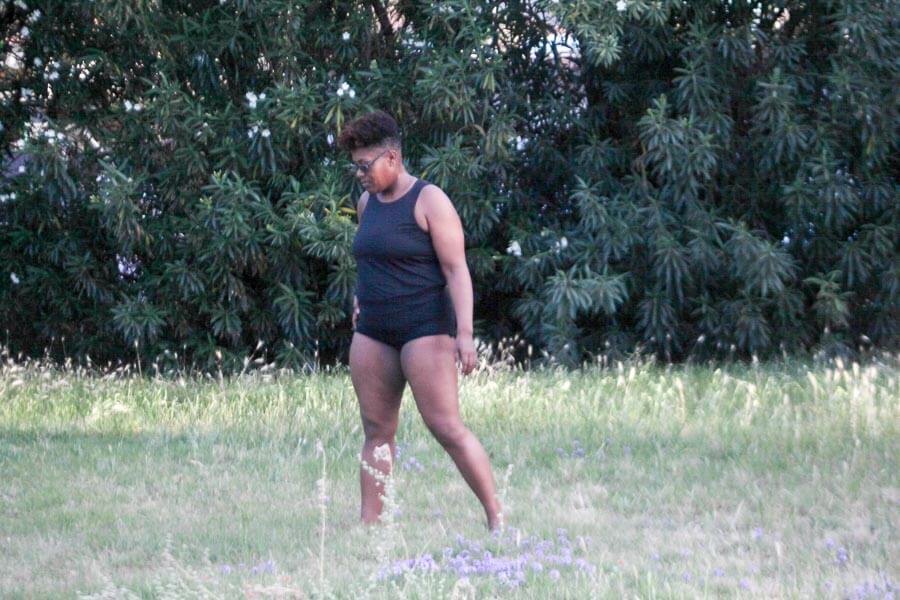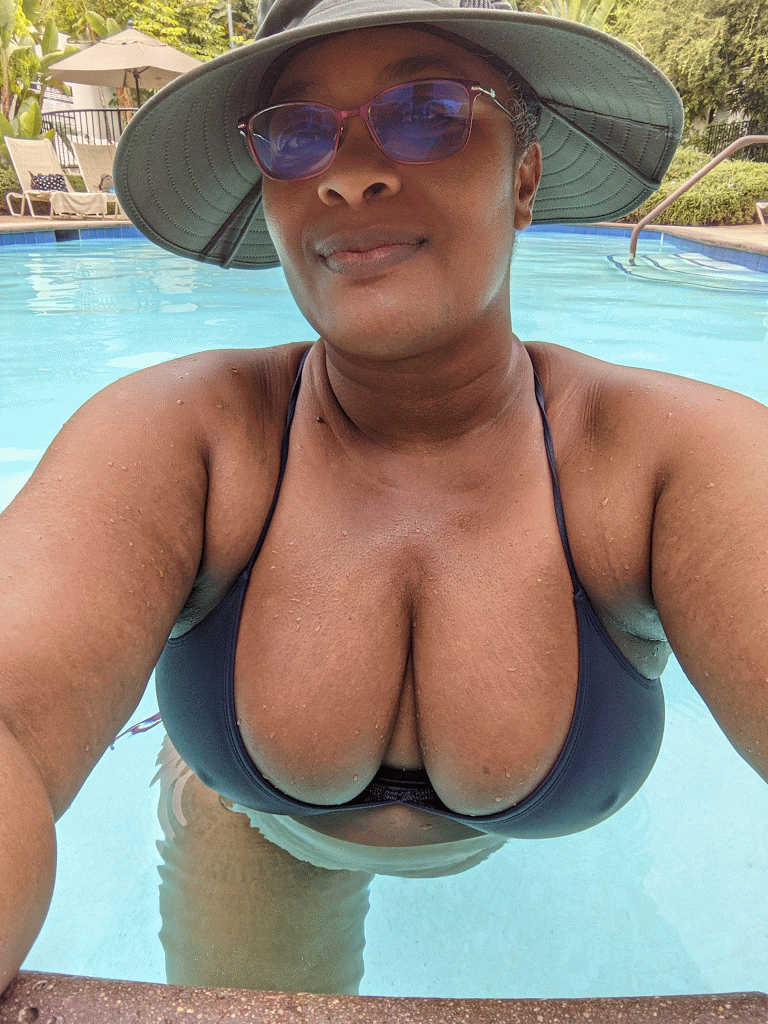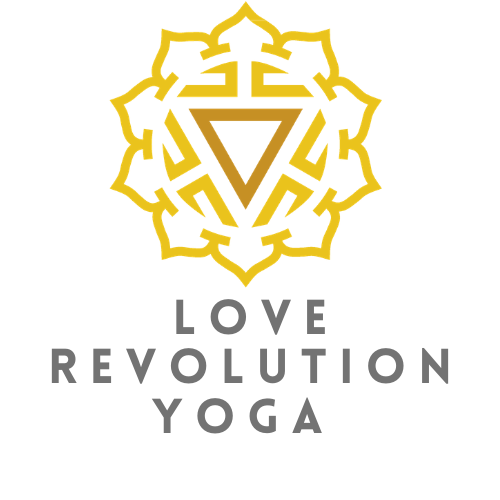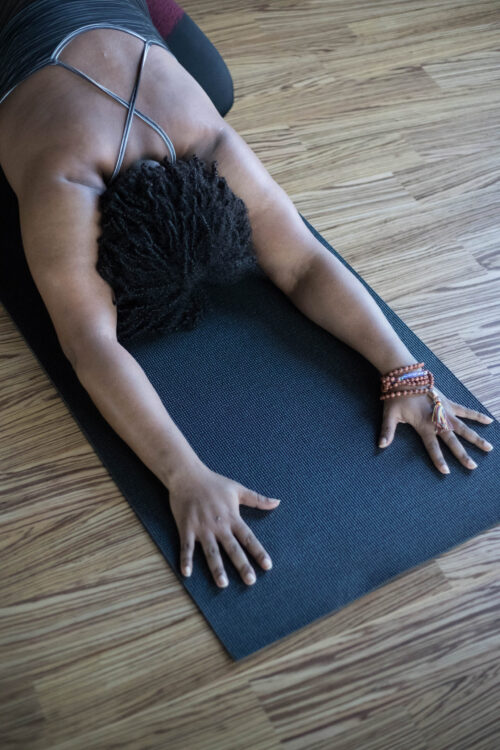May is Lupus awareness month. Lupus is an autoimmune condition wherein the immune system becomes inflamed and starts to attack healthy tissue. The Lupus Foundation of America estimates there are 1.5 million people in the US living with Lupus — 90% of which are women.
I was diagnosed with systemic lupus erythematosus (Lupus) in 2016, after being sick and in an active flare for two years. I was sick because a flare is when the disease is active and the symptoms get worse.
The symptoms started while I was doing my yoga teacher training. At first, it was a little soreness in my hips and shoulders and progressed to the point where I was tired all of the time, I couldn’t put any pressure on my wrists or shoulders, I couldn’t ride my bike anymore, and sat through most of my training. Before the symptoms started, I had been on a fitness journey that included biking all over the city and practicing yoga-asana six days a week, sometimes twice a day. I felt invincible because I had put a lot of work into being healthy, fit, and strong — only to have my health decline for two years without a clue as to why.
And then one day, I woke up in so much pain I couldn’t move. I felt paralyzed and scared and laid there crying, trying not to let the sobs shake my body too much for fear of increasing the intensity of the pain. Fortunately, my training kicked in and I started breathing to calm my nervous system so I could think clearly.
As I calmed down I could feel some of the tension release in my body and I heard the voice of Beatrix Kiddo in my mind say “Wiggle your big toe.” I slowly sent intentional signals to my body to move a finger, a wrist, an elbow, an arm…
We didn’t have a car or a phone — and our internet service had been turned off during the night for nonpayment — so getting to the ER was a whole ordeal. But I had the foresight to pick an apartment a five-minute walk from the yoga school, and if I could get there, I could connect to wifi and call for help.
Except that it was a five-minute walk. The paralysis was short-lived, but the fire in my joints was constant and consuming. Slowly, my husband, David, helped me get dressed, and we made the longest five-minute walk (that was more like 15 minutes) to the school computer lab where I called my mentor. All she asked was “Where are you?” Then she dropped everything to pick me up from the school and take me to the emergency room.

The Search for Diagnosis
The hospital staff insisted on testing me for drugs when and didn’t really seem to take me seriously until they found none in my system. I explained that I felt like my whole body was on fire and it was most extreme in my neck, shoulders, hips, and fingers. The doctor did some reflex tests and seemed positive about the response — that is, until he started to examine my joints — then his face turned grim.
“That’s as far as you can turn your head?”
“Mmhmm..”
“Grip my thumbs.” He held his hands out in front of me with his thumbs up. I could barely wrap my hands around his thumbs, let alone “grip” them.”And you can’t squeeze any harder?”
I choked back tears. “I’ve been having a hard time holding things recently. I used to ride my bike around town but had to stop because the pressure on my shoulders and gripping the handlebars hurt.”
He ordered some pain meds and a CT.
I was only partially lucid when the nurse practitioner came in to talk to me about the results. It was her turn to look grim as she told me that all of the lymph nodes in my body were inflamed. She had never seen anything like this before except in patients with Lymphoma.
She came in close, grabbed me by the shoulders, and looked me in my eyes: “I don’t think you have Lymphoma, but I do want to understand how serious this is. You need medical attention and you need to contact an oncologist as soon as you can.”
Before I left, I filled out an application for AHCCCS — Arizona’s version of Medicare — the approval for which came just in time to cover the $17,000 ER bill and the rest of my medical bills for the year. During that time, I started a process of tests — bloodwork, MRIs, mammograms, and biopsies — in an effort to figure out why my lymph nodes were all inflamed. I was referred to an amazing oncologist/hematologist who combed through all of the tests, until one day she found a clue.
“We found a marker in your blood work that appears to be in the rheumatoid family, but isn’t rheumatoid arthritis,” she said. “I think it’s Lupus, so I’m going to refer you to a rheumatologist to confirm.”
Sure enough, the rheumatologist confirmed that I had systemic lupus erythematosus, which can affect the skin, joints, brain, kidneys, and other internal organs. In addition to joint pain, Lupus could also cause fatigue. I felt a rush of relief as the doctor explained why I was feeling the way I did and that since the disease activity was marked by an overactive immune system, the treatment was immunosuppressants.
“You should start to feel better in a couple of weeks,” he said as he wrote the prescription.
Yoga Teacher on the Autoimmune Rollercoaster

The treatment was just in time to graduate from my 200-hour Yoga Teacher Training and start the audition process to teach at a studio that was scheduled to open soon. The timing was perfect because the inflammation was starting to subside and I was able to reconnect to my physical practice again. And over the next few years, I threw myself into teaching yoga with a regular schedule of weekly classes.
And while I became in demand among the local yoga studios, I also found myself on a Lupus-induced energetic and emotional roller-coaster. Sometimes I felt great; at others, I was so tired that showering might zap my energy for the whole day. At my peak, I was teaching eight classes per week, subbing two or three, and taking two or three classes per week — all of which were in a hot room. I was also a teacher who prided myself on giving great adjustments and touching everyone in the room.
But I was sick, sore, and tired all the time.
I wanted to believe that I could still be the kind of athlete I’d always been and grew increasingly frustrated when my body didn’t move the way it used to. I started practicing handstands and backbends, which can be an interesting exploration, but really I was trying to compete with the young, slim, bendy white women by which I was surrounded. Eventually, my body started to break down.
Again.
This time it was a back spasm that left me immobile for weeks, and in physical therapy for a year. That’s when I decided to back off and prioritize being able to move, over being able to do gymnastics. I stopped teaching the really athletic and fitness-based yoga classes, opting instead for the classes where there was space for stillness and reflection.
That was a hard year. On top of the physical injuries, I lost two-thirds of my income within the span of a month and found out my son was in jail just weeks before I was scheduled to visit him for the first time in years. I felt broken, exhausted, and like such a failure. And after years of working as a yoga teacher and freelance writer, I went out and got a regular J-O-B. I continued to teach a few yin and restorative classes during the week while trying to maintain my own studio practice and working a full-time job as a content strategist for a startup studio. However, we were forced into in pandemic lockdown a few short months later.
No more office, no more studio yoga.
I knew I could work my content strategist job from home; I’d done that most of my career. What I wasn’t so clear about was how I’d continue to teach yoga. Life had just whiplashed me all around and I spent much of the pandemic isolation dealing with anxiety and depression on a level I had never experienced before.
Maybe it was inspiration; maybe it was desperation for connection, but that summer I started a virtual yoga studio called Love Revolution Yoga. I missed teaching yoga, but with all of the racial unrest of that year, I didn’t know when or if I’d ever feel safe teaching in a physical studio anymore. Love Revolution was an idea I’d played around with in my classes, and I decided to really own it and lean into the idea of yoga as a practice of love and social justice. And I spent the next year and a half building a video library of yoga-asana classes, meditations, and an online course — all the while holding something back.
I’d chosen the asynchronous, on-demand, subscription model telling myself that I couldn’t physically sustain having to physically teach a regular weekly schedule of classes. And there was nothing wrong with this business model, except that I’d chosen it out of fear. I was afraid my body would fail me again. And I did have another flare, but this time, I had set myself up in such a way that having a flare didn’t mean I couldn’t teach. I was always teaching because I had built a library for the purpose of being able to teach asynchronously. Still, people only seemed to sign up for the membership because they knew me or had taken a class in a physical space with me.
Despite setting myself up intentionally so that I didn’t have to be physically present at a specific time or place, I still felt ashamed about not being able to maintain a weekly schedule of classes. I didn’t trust my body. In fact, I was angry at it for letting me down. For not being to live up to its former athleticism. For being so broken, fragile, and in pain. The internal script that me and my body were a failure was like an albatross around my neck, dragging me into self-loathing and despair.
Confronting Shame and Learning to Love Myself Again

But I didn’t recognize this person. I was used to feeling confident and determined and this new person was sad, cynical, and joyless. Just as my yoga practice had taught me, I started to inquire and search within to really uncover the root of my discontent. As part of this svadhyaya — or inward inquiry — I started seeing a therapist and I signed up for a coaching program with the intention of recapturing my magic.
One of the things that came up for me during this time was that I was holding back because I didn’t trust my body. I had played the internal script that I was disabled and couldn’t rely on my body to sustain the energy necessary to accomplish what I wanted to do, I started to believe this self-imposed limitation. And in both therapy and coaching I worked on changing that internal script so that instead of meeting the challenge with trepidation, I could meet it with courage and excitement instead.
It took literally looking at myself in the mirror and finding something nice to say every day for several months to reprogram my brain to believe in myself again. It took telling myself “I love you” and reminding myself how awesome I was every day. Thanking my body for all of the many years of hard athleticism, and for being resilient enough to recover from injury and chronic illness flares.
Ultimately, it took radical acceptance and deciding to love me and my body unconditionally without anticipating failure or fearing success. That’s right: Underneath all of the shame and disappointment, I was afraid of what would be required of me if I was actually successful. The reality was that the Universe had given me a calling and my fear was the only thing holding me back. But my commitment is not to the fear — it’s to teaching people to love themselves unconditionally. It’s to being an agent of change and a light bearer in a dark world.
There’s no cure for Lupus, so there’s still the possibility of having a flare, but now I try to see the flares as a message from my body that it’s time to rest. And there’s no failure in rest. In fact, resting in a world that demands productivity to the point of exhaustion, rest is a radical act of resistance.
When I had my last call with my coach, I knew I had really changed because when she asked how I was feeling, I was able to speak with confidence and joy about being busy, excited, and ready to face this new era of my life. I didn’t feel conflicted about it and I wasn’t afraid of the “yes” the Universe had met me with by serving up opportunities to show up in the world the way I kept saying I wanted to show up.
In many ways, I’m still in the gestation period for these opportunities and I don’t know what the outcomes will be. What I do know is that I confronted my own shame and decided it didn’t serve me to carry it around any longer. And if that’s not a victory, I don’t know what is.

